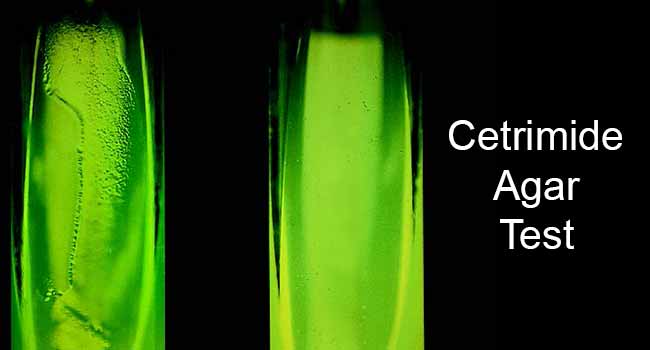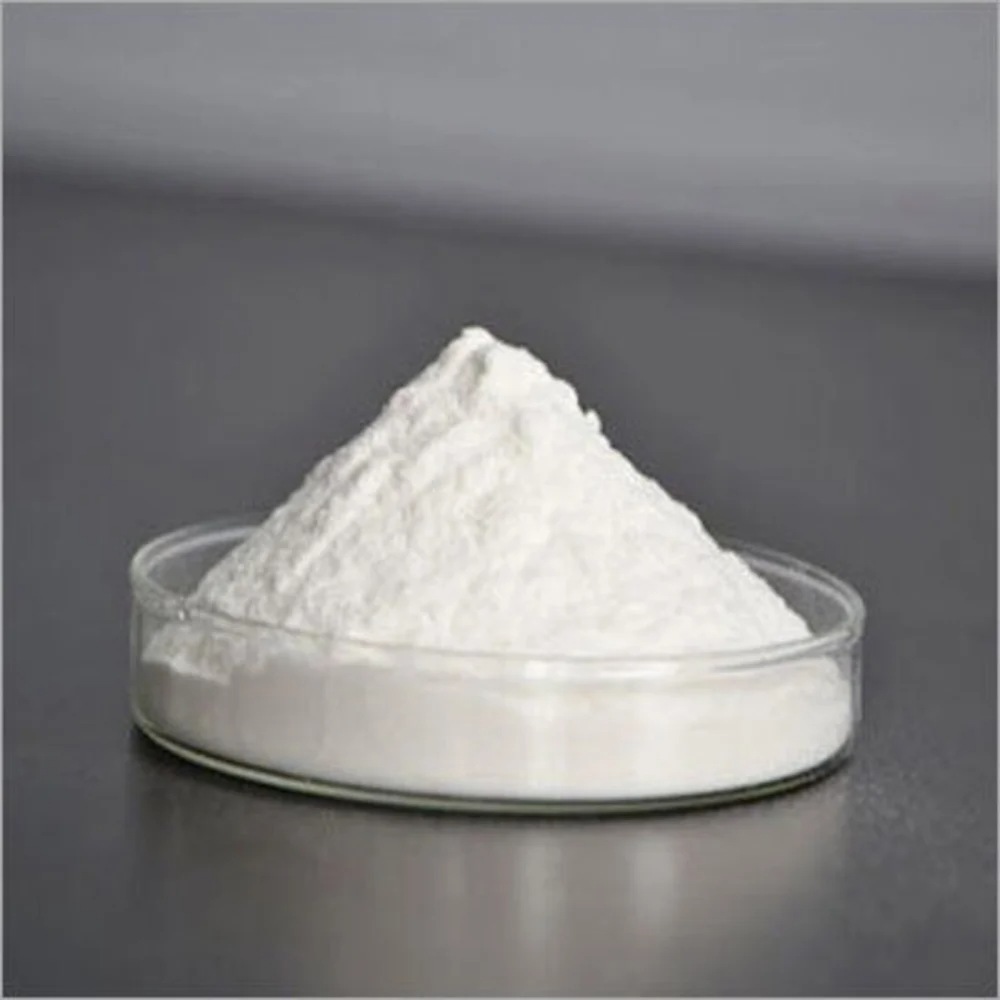Introduction
The Cetrimide Agar Test is a selective microbiological test designed to isolate and identify Pseudomonas aeruginosa from clinical, environmental, and industrial samples. Microbiologists often need to detect specific bacteria from a mixture of many different microorganisms. This is especially important in healthcare, water testing, pharmaceutical industries, and food safety. One such test that helps in isolating a particularly problematic and opportunistic bacterium is the Cetrimide Agar Test.
This test is mainly used to identify Pseudomonas aeruginosa, a bacterium known for causing serious infections, especially in people with weakened immune systems. The key idea behind the test is simple: create an environment where only this bacterium can grow, and all others are suppressed. That environment is a special medium called Cetrimide agar.
Let’s explore the principle, procedure, results, and uses of the Cetrimide Agar Test in a clear, easy-to-follow, and biologically meaningful way.
Table of Contents
1. What is the Cetrimide Agar Test?

The Cetrimide Agar Test is a selective microbiological test designed to isolate and identify Pseudomonas aeruginosa from clinical, environmental, and industrial samples.
It uses a selective medium, Cetrimide agar, which allows only P. aeruginosa to grow while inhibiting the growth of other bacteria. It works based on the ability of this bacterium to resist a chemical agent called cetrimide.
2. What is Cetrimide?
Cetrimide (also known as cetyltrimethylammonium bromide) is a quaternary ammonium compound—a type of disinfectant. It has strong antimicrobial activity and is commonly used in soaps and antiseptics.

In microbiology, its primary use in this context is to act as a selective agent. Most bacteria cannot tolerate cetrimide—it disrupts their cell membranes, leading to their death. However, Pseudomonas aeruginosa is uniquely resistant to it.
This resistance makes it easy to distinguish P. aeruginosa in a sample containing many other types of bacteria.
3. Principle of the Cetrimide Agar Test
The core principle of the Cetrimide Agar Test is selective inhibition and pigment production.
a) Selective Inhibition
- Cetrimide in the medium inhibits the growth of most other bacteria.
- Pseudomonas aeruginosa survives because of its natural resistance.
b) Pigment Production
P. aeruginosa produces water-soluble pigments:
- Pyocyanin – blue-green pigment
- Pyoverdin – yellow-green fluorescent pigment
- Sometimes pyorubin – red pigment
These pigments diffuse into the medium, creating characteristic color changes that help confirm the identity of the bacterium.
4. Composition of Cetrimide Agar
Here’s what typically goes into 1000 ml of Cetrimide agar:
| Component | Function |
|---|---|
| Peptone – 20 g | Provides nitrogen, amino acids for growth |
| Magnesium chloride – 1.4 g | Enhances pigment production |
| Potassium sulfate – 10 g | Also enhances pigment production |
| Cetrimide – 0.3 g | Selective agent, inhibits other bacteria |
| Agar – 13.6 to 15 g | Solidifying agent |
| Distilled water – 1000 ml | Solvent |
| pH adjusted to 7.2 ± 0.2 | Optimal for P. aeruginosa growth |
Note: Commercially prepared Cetrimide Agar is also available.
5. Preparing the Medium
Steps:
- Weigh and mix all the components with distilled water.
- Heat the mixture until everything is fully dissolved.
- Adjust the pH to about 7.2 using NaOH or HCl.
- Sterilize the medium by autoclaving at 121°C for 15 minutes.
- Cool the medium to about 45–50°C.
- Pour into sterile Petri dishes (approx. 20 mL per plate).
6. Sample Types Tested
Cetrimide Agar is commonly used with samples such as:
- Urine
- Sputum
- Wound swabs
- Ear discharges
- Burn site swabs
- Environmental water
- Soil
- Pharmaceutical products
7. Procedure of the Cetrimide Agar Test

Step-by-step Process:
- Collect the Sample:
- Use aseptic techniques to collect the clinical or environmental sample.
- Inoculate the Sample:
- Using a sterile loop, streak the sample on the surface of a Cetrimide agar plate.
- Incubation:
- Place the plate in an incubator at 35–37°C for 24–48 hours.
- Observation:
- After incubation, examine the plates for colony morphology, pigment production, and fluorescence under UV light (for pyoverdin).
8. Expected Results
Here’s what you look for in the test results:
| Observation | Interpretation |
|---|---|
| Greenish-blue colonies | Likely pyocyanin-producing P. aeruginosa |
| Yellow-green fluorescence under UV light | Presence of pyoverdin |
| Red pigment | Possible pyorubin |
| No growth | Organism is not P. aeruginosa or cannot grow in cetrimide |
| Flat, irregular, rough-edged colonies | Typical P. aeruginosa colony morphology |
9. Confirmatory Tests
Sometimes, additional tests are needed to confirm the identity of the bacterium:
A. Oxidase Test
- P. aeruginosa is oxidase positive.
B. Gram Staining
- Gram-negative rods, often singly or in pairs.
C. Growth at 42°C
- P. aeruginosa can grow at 42°C, while many others cannot.
10. Advantages of Cetrimide Agar Test
- Highly selective for Pseudomonas aeruginosa.
- Detects both presence and pigment production.
- Inexpensive and easy to prepare.
- Useful for both clinical and environmental testing.
11. Limitations
- Some strains of Pseudomonas may not produce pigments, leading to false negatives.
- Other cetrimide-resistant bacteria may rarely grow, causing confusion.
- Confirmatory tests are essential for accurate identification.
12. Safety Considerations
- Always use aseptic techniques to avoid contamination.
- Wear gloves, lab coats, and eye protection.
- P. aeruginosa is an opportunistic pathogen, so handle with care.
- Dispose of cultures using biohazard waste protocols.
13. Uses of the Cetrimide Agar Test
Let’s look at how this test is applied in various fields of biology and medicine:
A. Clinical Microbiology
- Isolating P. aeruginosa from urine, wounds, or burns.
- Diagnosing infections in ICU patients or those with cystic fibrosis.
- Identifying causes of otitis externa (ear infections).
B. Environmental Microbiology
- Testing hospital water systems, showers, and taps for contamination.
- Monitoring swimming pools and bottled water for safety.
- Tracking industrial biofilms or microbial pollution.
C. Pharmaceutical and Cosmetic Industry
- Ensuring sterility of products like creams, eye drops, and antiseptics.
- Routine quality control to prevent contamination.
D. Research and Academic Labs
- Studying Pseudomonas virulence, resistance, and biofilm formation.
- Developing new antibiotics or antimicrobial agents.
14. Pseudomonas aeruginosa: Why Is It Important?
P. aeruginosa is not just any bacterium—it is:
- A common cause of hospital-acquired infections.
- Naturally resistant to many antibiotics.
- Capable of forming biofilms that make treatment difficult.
- Often associated with:
- Burn infections
- Respiratory infections
- Urinary tract infections
- Sepsis in immunocompromised patients
Detecting it early using Cetrimide Agar can prevent serious health complications.
15. Comparison with Other Selective Media
| Medium | Selects for | Inhibitor |
|---|---|---|
| Cetrimide Agar | Pseudomonas aeruginosa | Cetrimide |
| MacConkey Agar | Gram-negative bacteria | Bile salts, crystal violet |
| Mannitol Salt Agar | Staphylococcus spp. | High NaCl concentration |
| EMB Agar | Enteric gram-negatives | Eosin Y and methylene blue |
Cetrimide agar is unique in that it not only selects for a single species but also helps visualize it through pigment production.
16. Summary Table
| Feature | Description |
|---|---|
| Test Name | Cetrimide Agar Test |
| Purpose | Isolate & identify Pseudomonas aeruginosa |
| Medium | Cetrimide Agar |
| Selective Agent | Cetrimide |
| Target Organism | Pseudomonas aeruginosa |
| Growth Characteristics | Green, blue, or yellow-green pigment production |
| Incubation | 35–37°C for 24–48 hours |
| Confirmatory Tests | Oxidase test, Gram staining, growth at 42°C |
Conclusion
The Cetrimide Agar Test is a simple yet powerful tool in microbiology, especially for the detection of Pseudomonas aeruginosa, a notoriously tough and resistant pathogen. Its effectiveness lies in the clever use of cetrimide, a chemical that inhibits others but spares this specific bacterium.
By encouraging pigment production and suppressing background flora, the test makes identification straightforward in clinical, environmental, and industrial settings.
Whether you’re diagnosing an infection, ensuring product safety, or conducting microbial research, the Cetrimide Agar Test plays a key role in modern biology and medicine. Understanding its principle, procedure, and interpretation equips you with one of the most important microbiological tools available today.
FREQUENTLY ASKED QUESTIONS
What is the Cetrimide Agar Test used for?
The Cetrimide Agar Test is primarily used to selectively isolate and identify Pseudomonas aeruginosa, a bacterium that can cause infections, especially in hospitals. The test is helpful in clinical diagnostics, water testing, pharmaceutical quality control, and research.
What makes Cetrimide Agar selective?
Cetrimide (a disinfectant) is added to the agar to suppress the growth of most bacteria. P. aeruginosa, however, can resist cetrimide and still grow, making it easy to isolate from mixed samples.
Where is the Cetrimide Agar Test commonly used?
Hospitals and diagnostic labs – to detect infections
Pharmaceutical and cosmetic industries – for sterility testing
Water treatment facilities – to check for contamination
Microbiology labs – for bacterial studies and research
Related Articles




